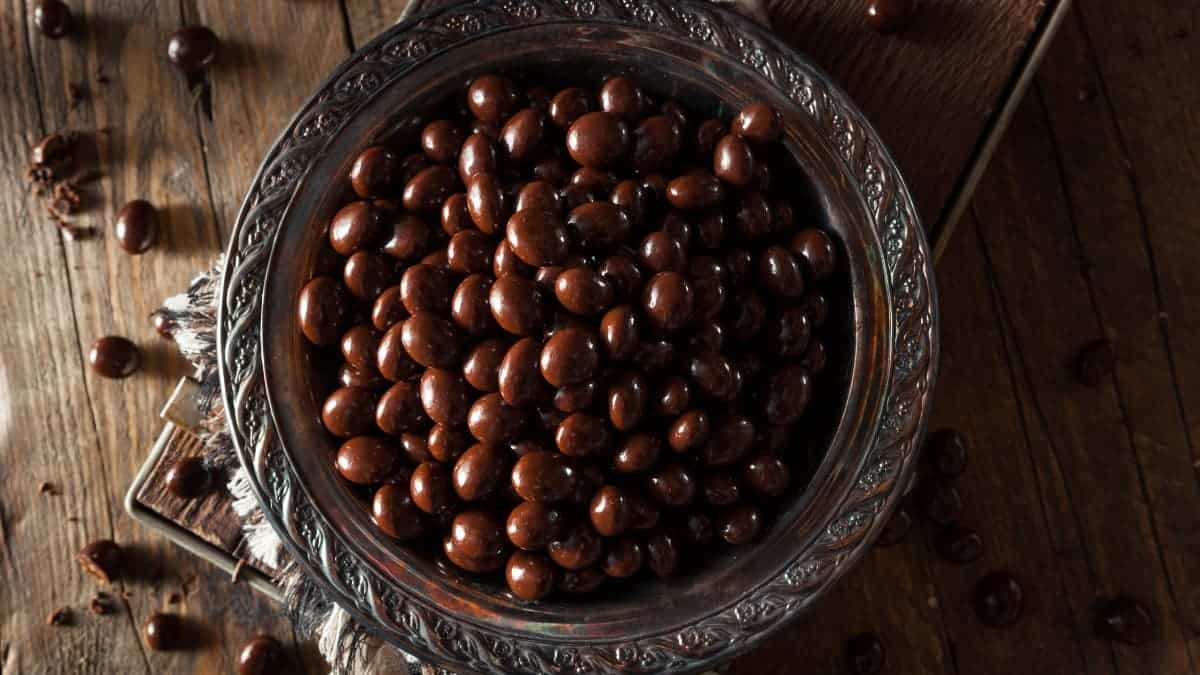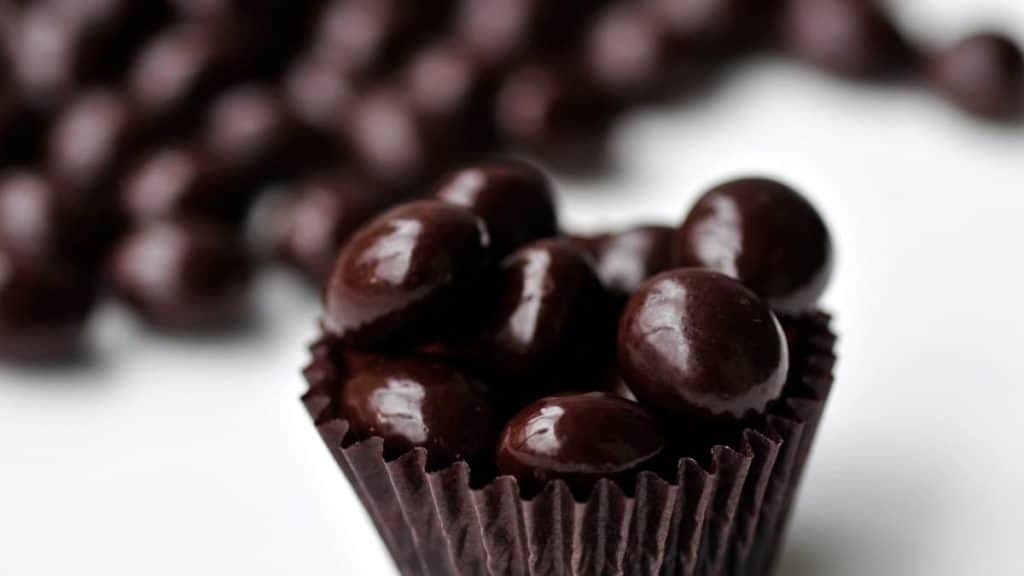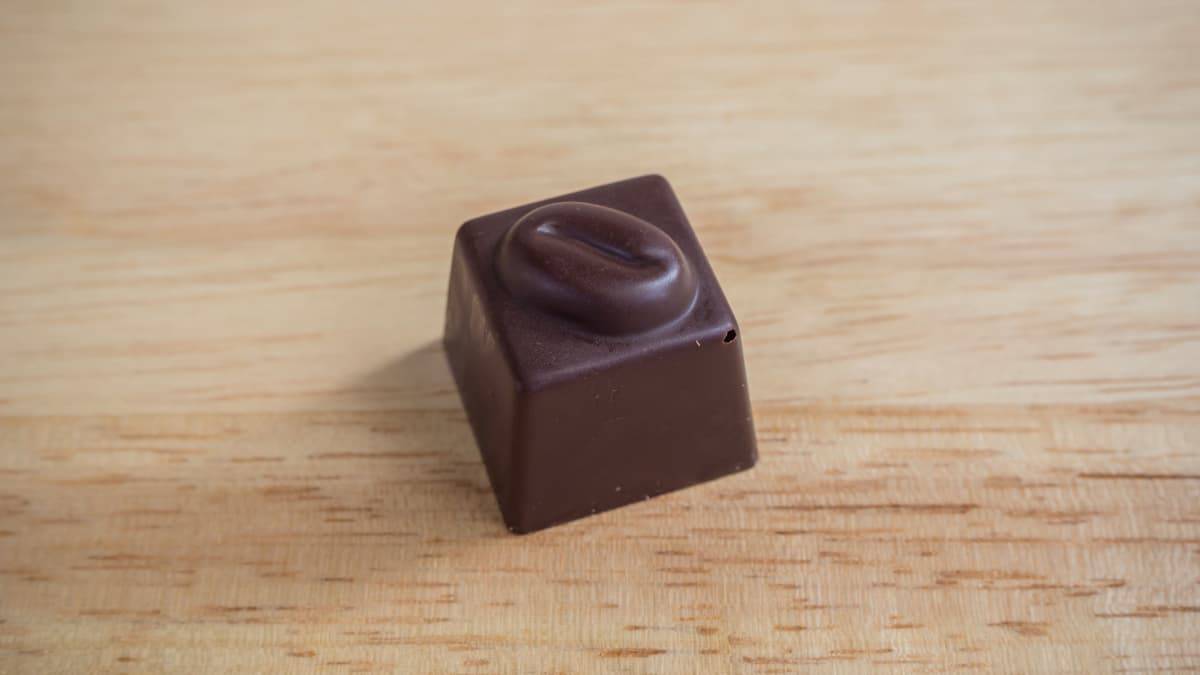How Much Caffeine in Chocolate Covered Espresso Beans?
Chocolate and coffee are a popular pairing on dessert menus. When you don’t have time to bake a cake and brew coffee, chocolate covered coffee beans make for a convenient post-dinner treat.
But if you struggle to sleep, pause before you munch on this addictive snack. You might want to consider how much caffeine chocolate covered espresso beans contain.

Chocolate Covered Espresso Beans Ingredients
The amount of caffeine in chocolate covered espresso beans comes down to two ingredients. The espresso bean. And the chocolate.
Espresso Beans
How much caffeine in chocolate covered espresso beans depends. Which type of bean are you using? Arabica or robusta?
A single Arabica coffee bean contains about 1.9 mg of caffeine. A single Robusta bean contains about 2.9 mg of caffeine. In other words, roughly one mg more caffeine.
Liberica and Excelsa beans contain lower amounts. But it’s highly unlikely that you’ll find these rare beans dipped in chocolate.
The average chocolate covered espresso bean will use an Arabica coffee bean. The coffee from Arabica plants has a lighter, less bitter flavor.
The roast profile also impacts how much caffeine your coffee snack contains. Darker roasts contain less caffeine than lighter roasts.
The coffee bean develops chocolatey flavors during roasting. So manufacturers tend to use a medium or dark roasted coffee bean for this particular delicacy.
Related Read: Caffeine In Chocolate VS Coffee
Chocolate
The type of chocolate (i.e. dark, milk, or white) significantly impacts caffeine levels. The fruit of the cocoa plant produces solids and butter. The cocoa solids contain caffeine, but the butter does not.
Dark chocolate contains the most caffeine. (According to the USDA, 100 g of 55% cocoa contains 124 mg.) It is also the chocolate most used to cover coffee beans. (It’s favored for its ability to offset the bitterness of darker roasts.)
Measured at 33% cocoa, milk chocolate contains less than half that amount of caffeine — about 45 mg per 100 g.
White chocolate is made using cocoa butter but does not contain cocoa solids. So white chocolate does not contain any caffeine.

How Much Caffeine is in Chocolate Covered Espresso Beans?
Every bean is a bit different, and there’s no standard amount of chocolate coating. So exact measurements will vary.
To calculate, let’s assume we’re using an Arabica bean and 3 g of chocolate:
A dark chocolate covered espresso bean will contain about 5.62 mg caffeine. A milk chocolate covered espresso bean will contain about 3.25 mg
White chocolate does not contain caffeine. So a white chocolate covered espresso bean will only be as caffeinated as the coffee bean itself.
Chocolate Covered Espresso Beans Serving
The USDA defines one serving of chocolate covered espresso beans as 28 pieces. This serving comes with a 336 mg kick of caffeine.
Check individual nutrition labels for more precise information. The exact serving size will depend on how much and what type of chocolate is used for the coating.
But for the most part, servings are defined somewhere between 30-40 g. This measurement translates to about 22 pieces. But for some brands, this is a mere 9 pieces.
Again, it depends on the type of chocolate and the thickness of the chocolate coating.

What If You Eat Too Many Chocolate Espresso Beans?
Eating too many chocolate covered espresso beans feels like drinking too much coffee. Symptoms of over-caffeination can range from mild to severe.
Let’s start with the mild symptoms, as these are the most common. Obviously, too much caffeine will make it difficult to sleep.
But eating too many chocolate covered espresso beans can also make you feel jittery. Or even anxious. Some over-caffeinated people will experience GI upset and more frequent urination.
More serious side effects include disorientation, psychosis, hallucinations, and difficulty breathing.
And yes, it is technically possible to consume fatal amounts of coffee caffeination. This mortality usually relates to irregular heart rates or heart attacks. Hypotension, electrolyte disturbances, and difficulty breathing are also dangers.
But, the lethal amount of caffeine is something close to 10,000 mg… aka over 800 USDA chocolate beans.
Wrapping Up: Caffeine In Chocolate Espresso Beans
Are you someone who would never drink coffee right before bed? If so, you might want to avoid the ever-so-tempting chocolate covered espresso bean. It produces similar effects as drinking coffee.
Roasting type and brewing method determine coffee caffeine content. Not so when you’re measuring caffeine in chocolate covered espresso beans. In this case, the type of chocolate will make the greatest impact on caffeine levels.
Without a doubt, dark chocolate espresso beans contain the most caffeine.
Of course, you don’t have to swear off every single chocolate covered espresso bean. Want less caffeine? Muster your self-control. Eat fewer beans. (It’s better than none!)
Or, like coffee, enjoy this treat earlier in the day.

